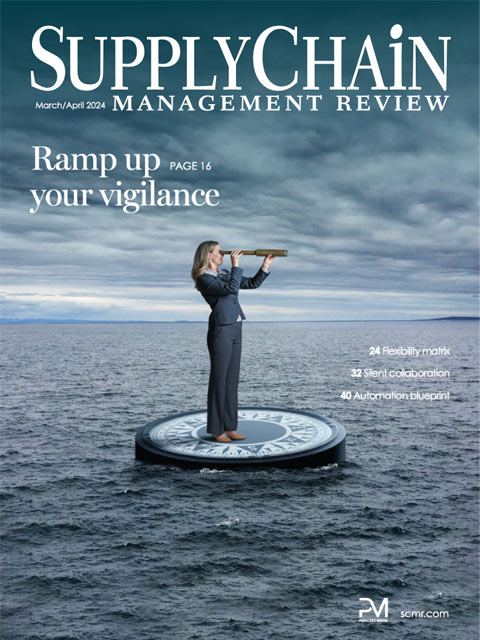Sorry, but your login has failed. Please recheck your login information and resubmit. If your subscription has expired, renew here.
March-April 2024
Part of any supply chain manager’s job is risk mitigation. Thanks to COVID-19 and the ensuing, and constant, disruptions that have followed, more companies are now focused on reducing their exposure to supply chain chaos. We’ve heard a lot about diversification in recent years—having multiple suppliers in multiple locations. But risk mitigation goes far beyond diversification, and the recent case of Boeing should serve as a cautionary tale not to avoid those other risks. Browse this issue archive.Need Help? Contact customer service 847-559-7581 More options
In a world where managers must develop capabilities that enable the management of supply chains under increasing uncertainty, flexibility is more important than ever before. In our research, we have identified nine fundamental drivers of supply chain flexibility. In this paper, we present these drivers as part of a new model, the SC-Flexibility Drivers Matrix, designed to help supply chain managers develop flexibility in their supply chains.
The relevance of supply chain flexibility in today’s world
The post-pandemic world can be described as a VUCA world—as it is volatile, uncertain, complex, and ambiguous. Although the COVID-19 pandemic turned out to be the start, there are plenty of other recent events, such as the ongoing Russia-Ukraine war, the U.S.-Taiwan-China conflict, the Suez Canal blockage, and the recent Israel-Hamas war in Gaza, that have resulted in major global supply chain disruptions.
In today’s global and interconnected supply chains, one important observation is that these natural and political disruptions spread extremely fast. This challenges supply chain managers and requires them to implement flexibility in their supply chains.

This complete article is available to subscribers only.
Log in now for full access or start your PLUS+ subscription for instant access.
SC
MR
Sorry, but your login has failed. Please recheck your login information and resubmit. If your subscription has expired, renew here.
March-April 2024
Part of any supply chain manager’s job is risk mitigation. Thanks to COVID-19 and the ensuing, and constant, disruptions that have followed, more companies are now focused on reducing their exposure to supply chain… Browse this issue archive. Access your online digital edition. Download a PDF file of the March-April 2024 issue.In a world where managers must develop capabilities that enable the management of supply chains under increasing uncertainty, flexibility is more important than ever before. In our research, we have identified nine fundamental drivers of supply chain flexibility. In this paper, we present these drivers as part of a new model, the SC-Flexibility Drivers Matrix, designed to help supply chain managers develop flexibility in their supply chains.
The relevance of supply chain flexibility in today’s world
The post-pandemic world can be described as a VUCA world—as it is volatile, uncertain, complex, and ambiguous. Although the COVID-19 pandemic turned out to be the start, there are plenty of other recent events, such as the ongoing Russia-Ukraine war, the U.S.-Taiwan-China conflict, the Suez Canal blockage, and the recent Israel-Hamas war in Gaza, that have resulted in major global supply chain disruptions.
In today’s global and interconnected supply chains, one important observation is that these natural and political disruptions spread extremely fast. This challenges supply chain managers and requires them to implement flexibility in their supply chains.
SC
MR


Latest Supply Chain News
- Manufacturing again contracts in October, reports ISM
- 5 common communication issues
- Three frameworks for creative problem-solving in supply chain
- Mitigating geopolitical uncertainty: 4 essential tactics for industrial CSCOs
- Supply chain strategy for medical devices: A Q&A with industry expert Sanjay Gupta
- More News
Latest Podcast

 Explore
Explore
Business Management News
- Manufacturing again contracts in October, reports ISM
- 5 common communication issues
- Three frameworks for creative problem-solving in supply chain
- Mitigating geopolitical uncertainty: 4 essential tactics for industrial CSCOs
- Supply chain strategy for medical devices: A Q&A with industry expert Sanjay Gupta
- How technological innovation is paving the way for a carbon-free future in logistics and supply chains
- More Business Management
Latest Business Management Resources

Subscribe

Supply Chain Management Review delivers the best industry content.

Editors’ Picks





